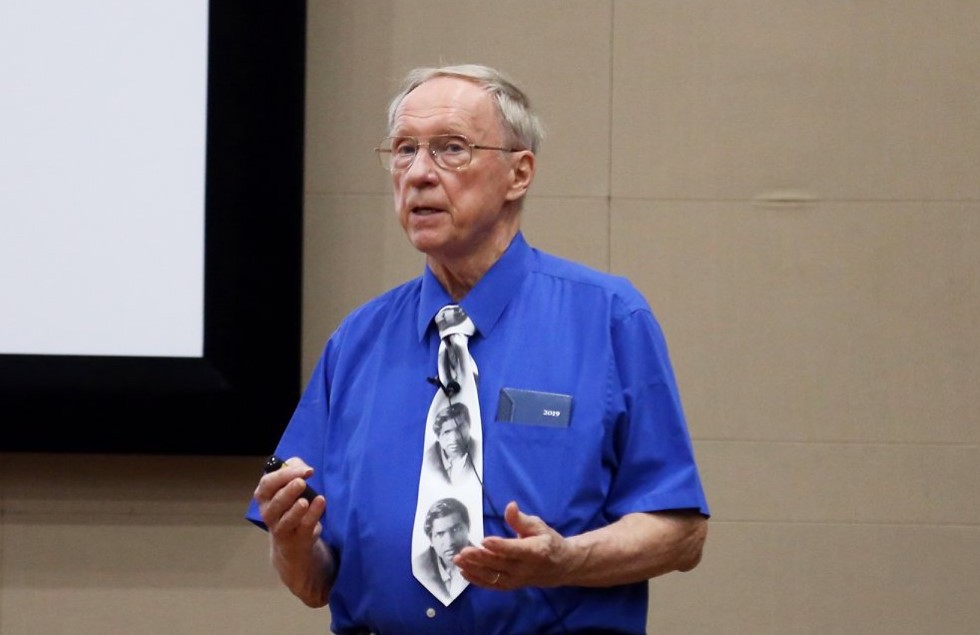
Atul Dixit, himself a former PhD student of Bruce Berndt, met him during a conference organized to jointly celebrate the 85th birthdays of Berndt as well as his friend and collaborator George Andrews, attributed with the discovery of the “Lost Notebook” of Ramanujan. In a face-to-face conversation with Atul Dixit, Bruce Berndt journeyed backwards in time, recounted significant moments and events of his life – more than half of it spent in his ongoing search of the enigma of Ramanujan.
I would like to first thank you for agreeing, and for taking the time out, to have your interview taken during this conference. Let me start by asking about your childhood. So could you please begin with a background of yours?
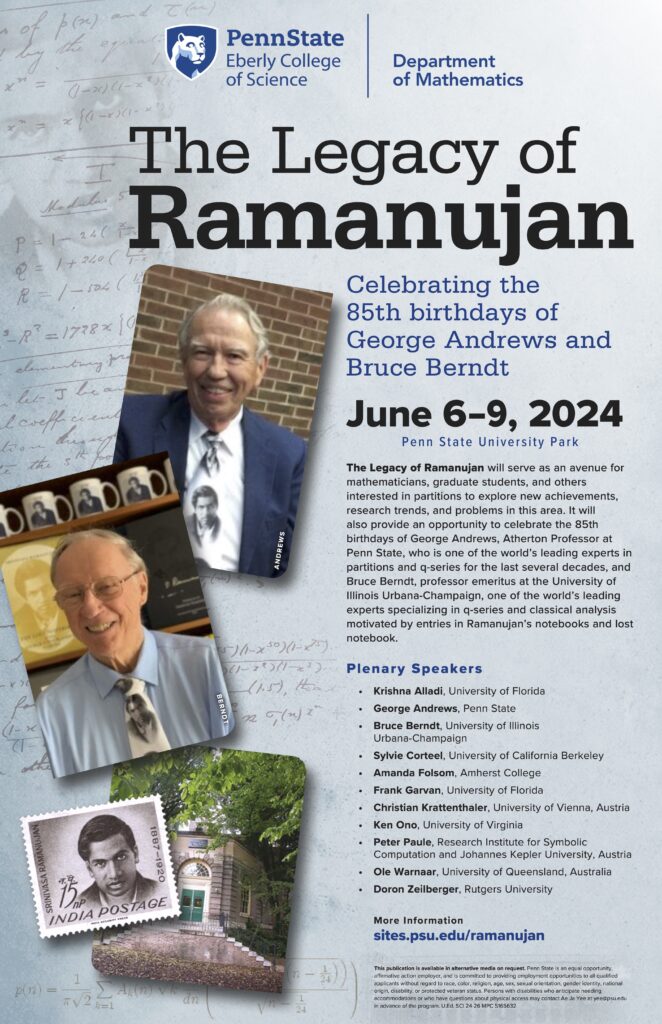
My immediate family had a rough beginning, because my father was 15 years old when the height of the Great Depression happened in 1929, and finances were very scarce in the family. So he quit high school and got a job as a truck driver. He never completed high school. My mother was actually two years older than my father, and she completed high school. My mother and father had rather different personalities. My mother was very outgoing, you might say, a member of the popular crowd in high school, whereas my dad was rather reserved and a very low key guy. But anyway, they had a very happy marriage. Because of economic difficulties, it took some time for my dad to actually save up enough money to buy a farm. We lived with my grandmother for nearly one year, and then we rented a farm for a few years. During my first grade, my parents had saved enough money to buy a 30-acre farm for ourselves. Consequently, I changed schools in the spring of my first grade.
Getting back to my early childhood before my first grade, I had a rather tumultuous childhood. I became very sick at the age of two, and I was taken to the hospital in a very weakened condition. It was thought that I might lose my eyesight, and my eyes became crossed. My mother told me that I stayed in the hospital for two weeks. Fortunately, with surgery, I did get better, and my eyes became uncrossed. And this is what Helen actually mentioned in her talk last night. During this illness, to test the sight in my eyes, physicians held playing cards at various distances for me to identify, because I knew the numbers and the playing cards from watching my dad and my uncles play poker or pinochle every Sunday evening. Doctors concluded that I had essentially no sight in my left eye because of my illness. Jumping ahead many years later, opthamologists said that, in fact, I did not lose my eyesight because of the illness, but I was born with little sight in my left eye. I’m legally blind in my left eye.
I had a couple other rather traumatic experiences. As I mentioned, we lived on a rented farm for a couple years. We had cows, and I loved milk, but the milk from the cows was not pasteurized – it was just straight from the cows. Anyway, I got extremely sick once, at the age of maybe three or four. Because of my illness, an inspector came from the health department in the state of Michigan—and saw that the cows were diseased. My dad, as I recall, was told that he had to shoot the cows; he buried them on the farm. In these days, my father would not have been allowed to do that.
On both my mother’s and father’s side, my ancestors were farmers
I had another traumatic experience. We lived only about one or two miles from Lake Michigan. We often went there to swim. There were large sand dunes along the shores, in particular about five miles to the south of us. One evening, at about the age of four or five, I was wading with my cousins in Lake Michigan. My cousins were actually a bit younger than I was. I don’t know what happened, but all of a sudden I was underwater, and I remember reaching up with my left arm. My Uncle Alan saw my arm, and rushed out and saved me. Fortunately, he knew artificial respiration, and so I was saved from drowning.
How long was it that you were underwater?
Oh my God.
Before we moved to the farm that my dad bought in the spring, when I was in the first grade, I was hit by a car. School was out and I was crossing the highway. It was actually a very busy highway—the main highway going from St. Joe and Benton Harbor to Michigan City and Chicago. I remember it like it happened yesterday. The school was on the corner, and my friends were already across the highway heading home a little bit to my right and then farther down the road… I remember looking very quickly to the left and anyway, I got hit by a car. I don’t know what happened after that – I was unconscious. My mother said I was thrown 25 feet.
It was a very close call. I was unconscious when he got me.
Oh my gosh.
How old were you?
Your birthplace is St. Joseph, I believe…
Benton Harbor lies to the north. St. Joe and Benton Harbor were called twin cities, but Benton Harbor was a bit larger. Life was rather segregated at that time. St. Joe was almost all white, and Benton Harbor was largely black. Stevensville, where I grew up, and where my dad had the farm, is five or six miles south of St. Joe.
We had a 30-acre fruit farm. Our main crops were black raspberries, which are still my favourite fruit, sour cherries, grapes, and peaches. But we also grew plums, pears, sweet cherries, and vegetables, but not in as great a quantity as the fruits. At that time, fruits were sold in a way that is completely different from current practice. We would pick the fruit and put them in containers, for example, quart boxes for raspberries. (There were 16 quarts per crate.) Very early in the following morning, my dad would take the crates on his truck to the market in Benton Harbor. Buyers, often grocery store representatives, from all over, many from Chicago, would bid on the fruit. If there were a lot of farmers selling, you wouldn’t get as much money for your fruit as when there were fewer trucks at the market. Of course, the selling price also depended upon the quality of the fruit. This was our primary source of income.
However, for grapes, Michigan Fruit Canners and Mogen David Wine were the primary purchasers. They bought grapes in bulk, so we didn’t need to put them in small packages.
Peaches were put in half-bushel or bushel baskets. My dad would again take them to the market. Almost all of the fruit was picked by my mom, my dad, and myself. Occasionally, we hired migrant or local workers to help, especially in the busy season, but for the most part, the fruits were picked by my parents and myself.
That brings me to another question. Can you tell us about the parental influence on you when you were growing up?
The The American Lutheran Church was a denomination in which the church members were mostly of Norwegian descent. Those in The Lutheran church in America were primarily Swedish in background.
The Lutheran Church Missouri Synod is a very conservative church, much more so than the other two branches that I previously mentioned. I left the Lutheran Church Missouri Synod at about the age of 23, and my parents weren’t happy about it.
Sunday dinner at the church?
What were the things that fascinated you as a child?
Can you also tell us about your siblings?
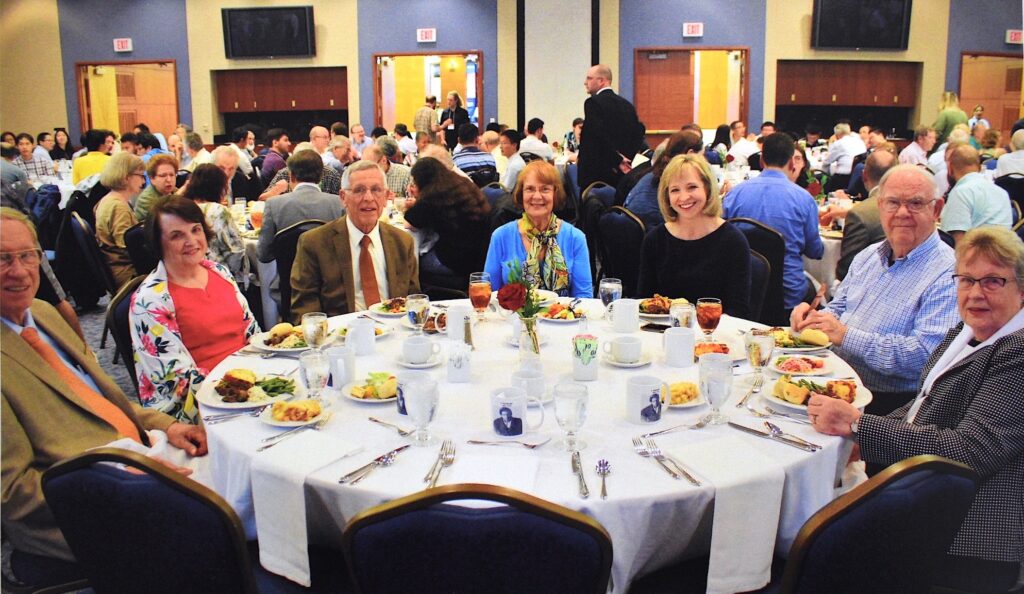
Could you tell us about the primary schools that you attended?
So one single teacher would be teaching?
Were there any favourite teachers during that time?
After that, from fifth through seventh grade, I had an extremely poor teacher. During the warm months, we played softball during both the morning and afternoon recesses, and during the noon hour as well. Our teacher played with us, and the normal recess times were often stretched by as much as a half-hour. When I was in seventh grade, our teacher did inappropriate things. He was immediately fired, and his licence was taken away. In summary, I did not get a good education during those three years.
In the Lutheran church, at the ages of 13 and 14, children normally receive intensive religious instruction, and at the conclusion are “confirmed”. One is required to learn a considerable amount of Biblical content and Lutheran teaching. My mother and the mothers of two of my second cousins arranged to carpool and drive us to St. Joe to attend the Lutheran school, where eighth graders received religious instruction for an hour or more each day. At the conclusion of the eighth grade, I was confirmed and became a member of the church.
As I previously related, our Lutheran church had over 3000 members, Consequently, the Lutheran school was large with over 450 children. In my eighth grade, we had 48 students, whereas if I had stayed at Evans School, our eighth grade class would have had either six or seven members. My teacher at the Lutheran School was very good, and for the first time in my life I had homework.
Was it because of the fact that you did not get good teachers for fifth through seventh grade that you decided to change the school?
What were your favourite avocations at that time, like music, sports or arts?
No one ever told me, “Well, you can’t see as well as others and, you know, that’s why you strike out.” Someone should have told me that I had talent in running. But this was something that I never thought about.
I also liked to play basketball, but for similar reasons, I was always uncomfortable on the basketball court.
the idea of going to a large university just terrified me
I mentioned earlier that I was faster than most kids. I ran track all four years during high school, and I was much more successful at track than I was in other sports. Schools were classified as A, B, C, and D according to enrollment. St. Joe High School was in class B. During my senior year, the state track meet was held at Michigan State University. At that time in history all of the tracks were cinder tracks, and track events were measured in yards. I qualified in the quarter mile (440 yards) for the State meet. It rained very hard all day of the State meet, and most of the track was covered with water. Toward the end of the quarter-mile, I was in the lead, but I could see this guy from River Rouge slowly coming up. I was exhausted, and I threw myself across the finish line and finished first.
My teammate finished first in the 100 and 220-yard dashes. Another teammate placed in the long jump, the high jump, and the hurdles. We consequently won the state championship, which was a complete surprise. We had had no thoughts of ever winning a state championship; it was the farthest thing from our minds.
On the following weekend, an evening meet was held at the University of Michigan, where runners participated by invitation. In particular, I competed against the class A quarter-mile champion, and, in finishing first, I beat him. So I can say, indeed, that I was the Michigan High School champion in the quarter-mile.
How were you as a kid? Did you like to make pranks or very simple and sober?
What were the early indications towards mathematics? Maybe people or books you admired at that time, which served as an inspiration for you?
In my freshman year in high school, I took woodshop—big mistake. I didn’t have any skills in that area. I got three B’s in my freshman year: two in woodshop and one in civics. After that, I got A’s in all of my subjects. There were 154 students in our graduating class; I finished third again.
There weren’t any subjects in which I particularly excelled. In my senior year I took physics, which I really enjoyed, and so decided to major in physics in college. I was very introverted, and the idea of going to a large university just terrified me. So, I went to the senior counsellor and told him that I’d like to attend a small college. He said that Albion College and Kalamazoo College were the two best small colleges in Michigan. I had run track on the Kalamazoo College campus, and I thought it was a rather unattractive college. I visited Albion College and decided to go there and major in physics.
Any specific events or circumstances which led you to go into pure mathematics?
It was clear that I liked maths better, so I switched to maths as my major. Most of my courses were from one professor, Keith Moore, who was a wonderful teacher and had a very strong influence on me. He played the oboe.2 I said to myself, “this is the kind of person I would like to be”, to go back and teach in a small college like Albion College. I continued to take all the physics courses, but I was really better in maths than physics.
I liked maths better, so I switched to maths as my major
Among the mathematics courses, what was your favourite back then?
I liked real analysis and ordinary differential equations. We didn’t have number theory or complex analysis, for example. When I took the SAT to go to graduate school, I was at a disadvantage because there were questions that I couldn’t answer because I didn’t have courses in those subjects.
Were you in contact with your roommates after you graduated from Albion College?
The second physics major whom I mentioned earlier was Wilbur Hurst, who also ran track with me. He is still a close friend of mine. He lives in Damascus, Maryland, which is just a couple miles from Rockville, where our younger daughter Sonja lives. Often when Helen and I visit her and our two grandchildren, we visit with Wilbur and his wife. He worked for the National Institute of Science and Technology during his entire career.
I applied for graduate school at Michigan, Illinois, Wisconsin and Purdue. I was rejected at Illinois and Michigan, and I chose Wisconsin.
During your Wisconsin days, there might have been many professors that you took courses with, before deciding on your supervisor. How did you decide who you wanted to work with?
I was a bit discouraged, but then I took a course in asymptotic theory of ordinary differential equations, which I really liked, and actually would do extra problems.
But the professor got upset with me, because he thought that I was trying to put the other students down by doing extra work. That discouraged me; I just did more problems because I liked to do the problems.
So I left differential equations and went to complex analysis. I had a good professor, R. Creighton Buck, who was a well-known researcher in complex analysis and wrote a popular book on complex analysis. He was willing to take me on as a graduate student.
In the spring semester of my third year, I took a course in modular forms from Rod Smart, because I was told the subject used a lot of complex analysis. I really liked the course, and so I asked Rod to be my advisor. In the following semester—this would have been the fall semester of my fourth year—I took a course in modular forms with applications to number theory, taught by Marvin Knopp. This is where I learned about Ramanujan, the circle method, and partitions for the first time.
I just did more problems because I liked to do the problems
So your move from Albion College to Wisconsin, especially because you mentioned not wanting to go to a big college—was it daunting?

In my first year, I also took a course in topology, which was very difficult for me. It was more abstract than anything I’d ever taken. I got a B in the course just because of the generosity of the professor. But, I didn’t like it at all. I’ve never cared for abstract mathematics—I’ve always liked concrete mathematics.
How was your experience with Rod Smart as your mentor?
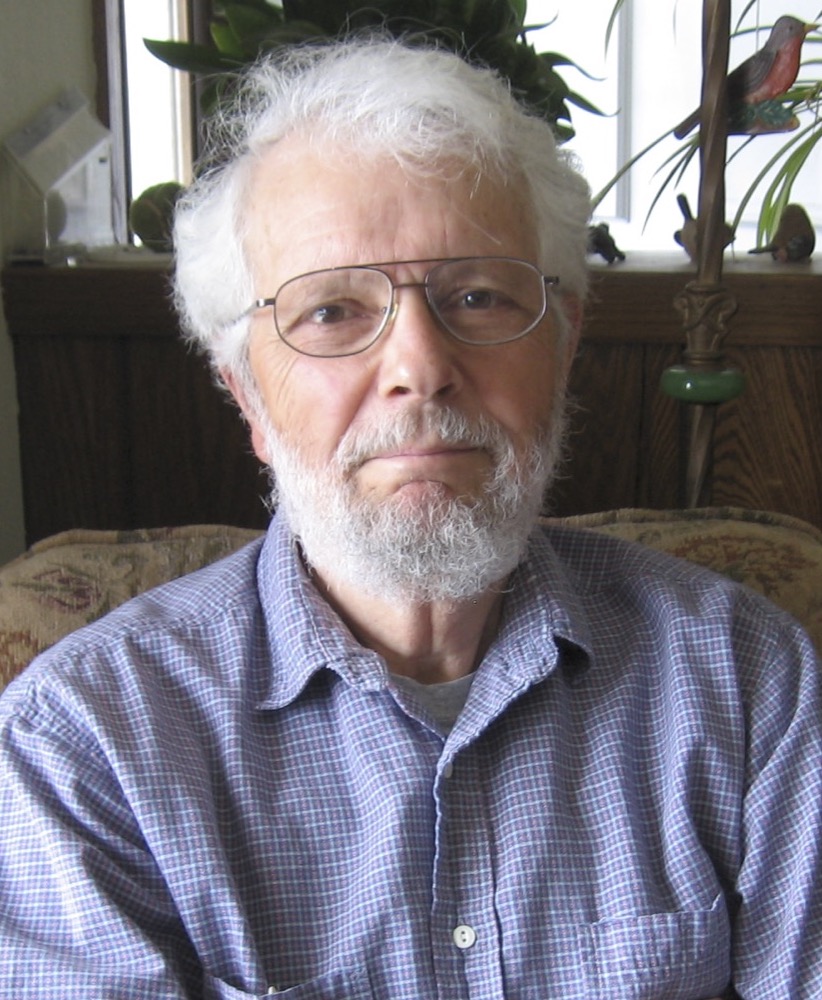
During your graduate school, do you remember any particular conferences or meetings that you went to?
The AMS annual meeting that year was in Chicago. Knopp told me that I should go to the meeting and meet Paul Bateman. I went and met Bateman on the first or second day of the meeting. He was surrounded by lots of people looking for jobs, and by professors—including Marvin Knopp. It was just before lunch, and so we all went to lunch together—about a dozen of us—to an extremely expensive restaurant. I didn’t have much money, so I ordered a hamburger. A lot of the people, the professors especially, ordered drinks and other expensive items. At the end of the meal, Marvin Knopp got up and said, “It is going to be too complicated to divide this bill properly into who had what. So let’s just split it even.” I was furious. Here I was, a graduate student, paying for these expensive drinks of rich professors.

The faculty at Illinois, especially in number theory, was very welcoming, and I enjoyed my research and teaching. There were a lot of courses—undergraduate courses that I had never taken. In particular, I never had taken courses in elementary number theory and complex analysis. Since there were many undergraduate courses that I had never taken, I signed up to teach them. In my first six years at Illinois up to my first sabbatical leave in 1973, I actually taught 23 different courses. The teaching load was two courses per semester. You have to take this with a little bit of a grain of salt, because some of the courses were not really different, but only variations of others—such as honours calculus and regular calculus, or differential equations for engineers and differential equations for mathematicians.
When did you first hear the name of Ramanujan, do you recall?
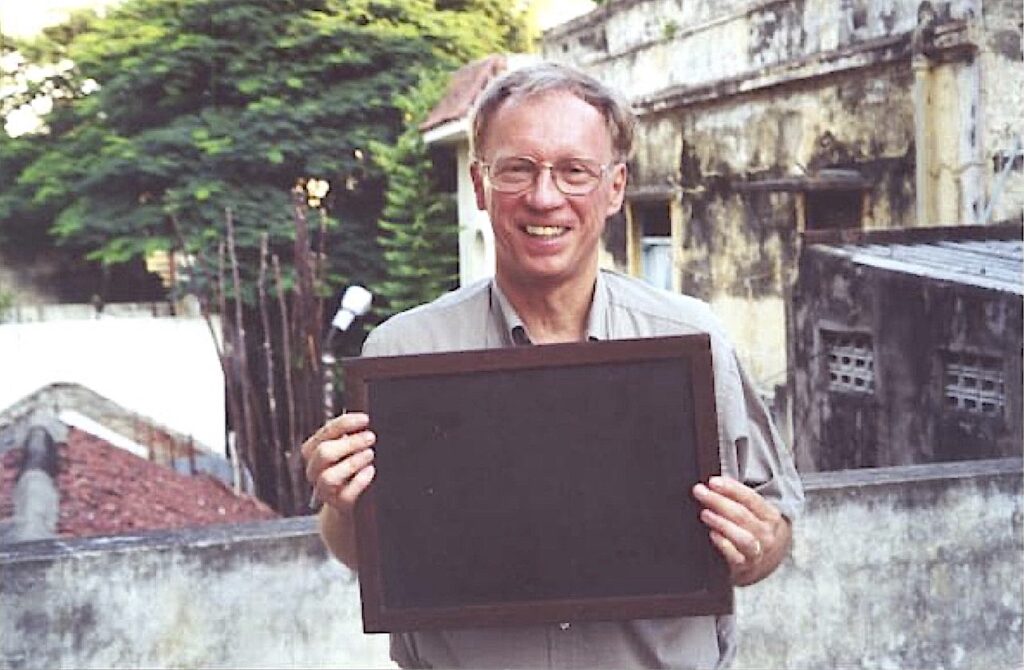
But your advisor, Rod Smart, was a student of Rademacher.
So through him, do you recall hearing about Ramanujan?
And at that time, did you know anything about Ramanujan’s life?
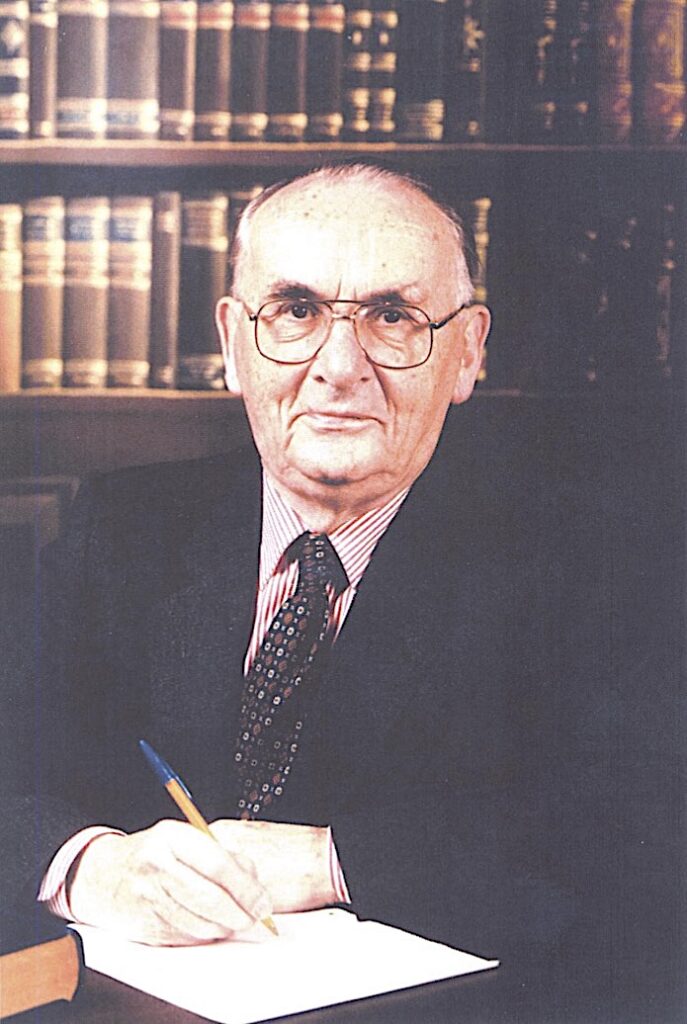
You also mentioned yesterday in the banquet about meeting Rankin in Glasgow. How was your lifelong association with him, with regards to Ramanujan in particular?
And then you wrote two books together.
Early on in your mathematical career, you mostly wrote single author papers until you started collaborating. I recall you mentioning afterwards about how wonderful collaborating is. So could you please say something about it?
I didn’t think much about it at the time, about co-authoring papers, but after my experience with Chowla, I sought more collaborations. We occasionally invited Chowla for dinner, and he would always bring marzipan for our two children. Whenever he came, our two daughters would rush to the door to get marzipan.
One other aspect of your career as a professor of mathematics was guiding students, especially PhD students. I recall somewhere in 2012, you also received the graduate student mentoring award from the Center for Advanced Study in Illinois. How was your experience guiding PhD students?

From then on, I was fortunate to guide more graduate students. Of all the experiences I’ve had as a professional mathematician, the most rewarding to me has been advising graduate students. While I have been fortunate to have received some awards, and I’m very grateful for them, advising my graduate students is the highlight of my career, and the most satisfying.
And you have had, since then, more than 30 or 35 students.
And you still continue to supervise Likun Xie.
Before we move on to Ramanujan, can you talk a little bit about the various responsibilities or positions that you had when you were at Illinois, other than, of course, supervising students and teaching courses?
And how was your experience serving on all of these committees?
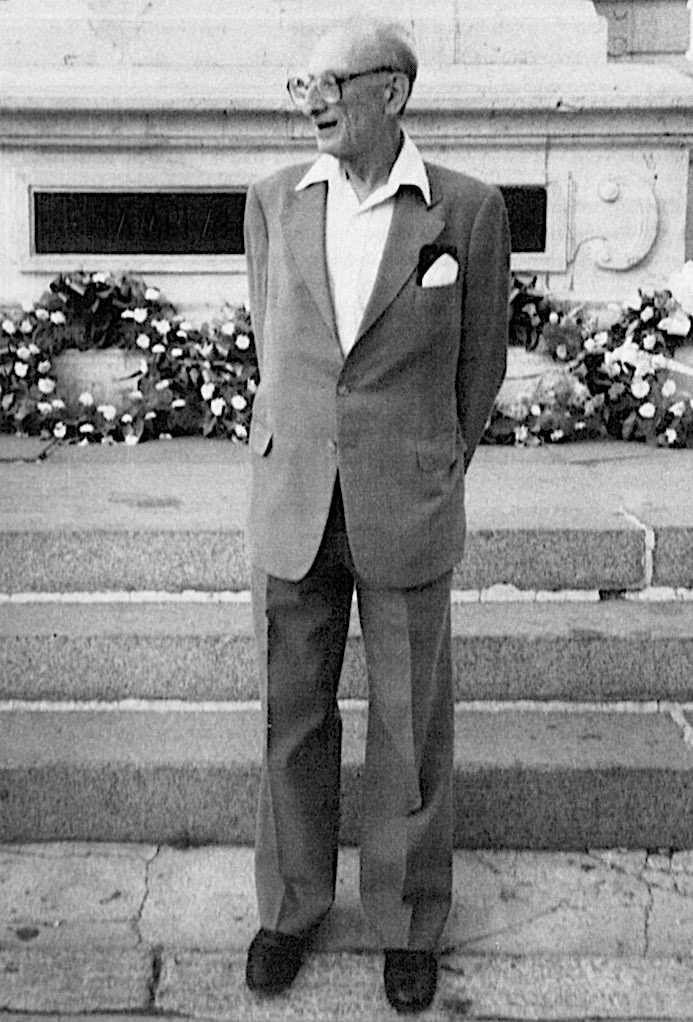
Coming to Ramanujan, I know this is something you may have been asked many times, how did Ramanujan enter in your mathematical career?
In these papers, Emil Grosswald proved some formulas from Ramanujan’s notebooks. He was at Temple University and evidently had a copy of the notebooks published by the Tata Institute. I accepted the papers for publication. One appeared in the Nachrichten der Akademie der Wissenschaften, Göttingen, and the other in Acta Arithmetica, At that time I didn’t think much more about it.
During my sabbatical year at the Institute for Advanced Study in Princeton, one day in February, while I was working on transformation formulas for Eisenstein series, I discovered that I could use my methods and theorems to prove the formulas that Grosswald had proved. I was elated! It was a wonderful feeling—I could prove formulas of Ramanujan!

The Institute did not have the Tata Institute’s photocopy edition of the notebooks, but the Princeton University Library did. I checked them out, and I found a couple other results that I could prove, but a few thousand others that I couldn’t prove. It was a marvellous experience going through these pages of wonderful formulas. When I got home, the first thing I did was to order a copy of the notebooks from the Tata Institute in Bombay. They cost a total of $25, including shipping in a wooden case. Can you beat that? $25 for 3000 theorems?
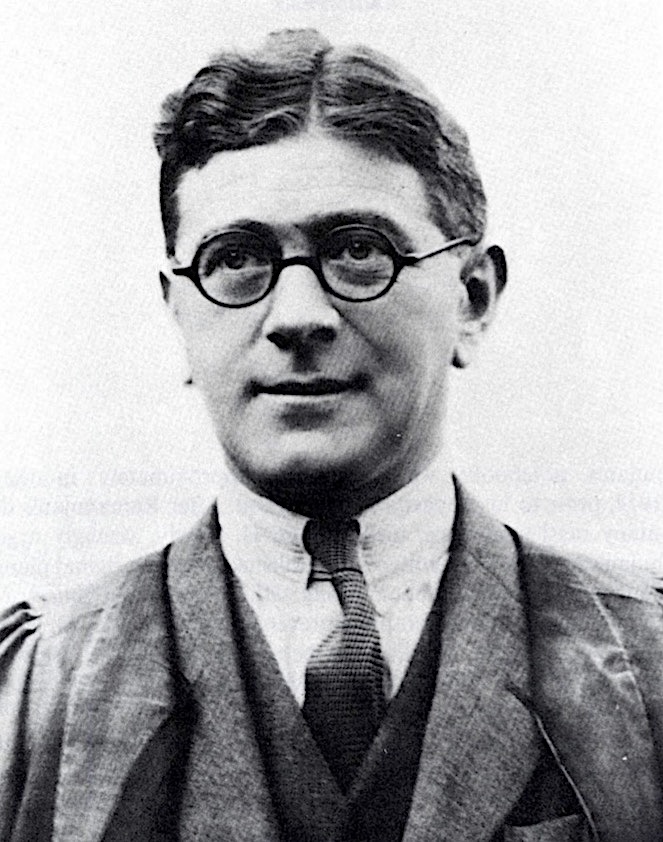
I hadn’t planned to do anything more. However, George Andrews told me that when he discovered Ramanujan’s lost notebook in the spring of 1976 at Trinity College, Cambridge, he also found the notes that G.N. Watson and B.M. Wilson had accumulated in their efforts to edit the notebooks in the late 1920s and early 1930s. I wrote to the librarian at Trinity College, and she sent me a copy of these notes. They began with Chapter 2 of the second notebook. I then decided that I would go back to Chapter 2, and with the help of these notes, begin to systematically edit the notebooks. (Chapter 1 was on magic squares, and I felt I could handle that at any time.) After more than 20 years, with the help of many of my graduate students, I completed the work in five volumes published by Springer.
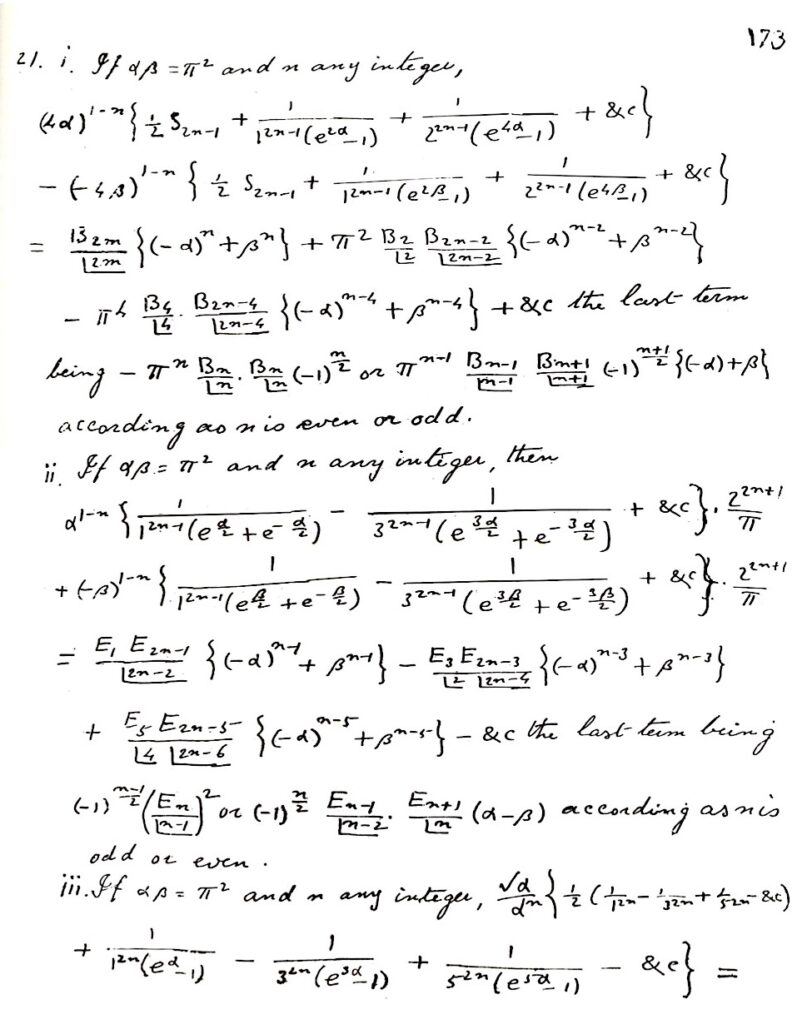
When my coauthors, who were mostly my graduate students, and I completed the proofs of everything in a particular chapter, we would publish a paper on the chapter in a journal. One day, when I was in my office, Professor Heini Halberstam phoned me and asked me to come to his office. I went across the street to his office, and he introduced me to Walter Kaufmann-Bühler, the main mathematics book editor at Springer-Verlag. Kaufmann-Bühler had come to visit Halberstam about the publication of selected papers of Hua, Loo Keng, which were being edited by Halberstam and eventually were to be published by Springer-Verlag in 1983. Kaufmann-Bühler said to me, “Professor Halberstam has told me about your work on Ramanujan’s notebooks. Would you consider publishing your work on Ramanujan’s notebooks in books for Springer-Verlag?” I had not previously thought of publishing my work in a book[s]. I said “Okay,” and I soon signed a contract.
The first book was in 1985.
Sometime during the Princeton days, when you came to know that your general theorem can actually prove a lot of theorems from Ramanujan’s work, perhaps by then you may have also read the biography of Ramanujan and became aware of his life?
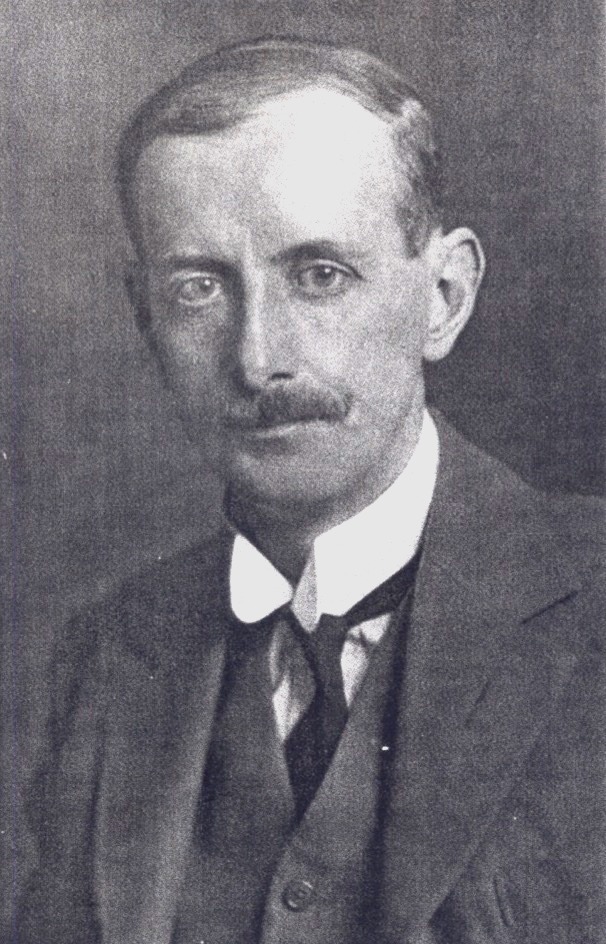
And you completed the five volumes on the notebooks somewhere in 1998?
Then you decided to collaborate with George Andrews. How did that collaboration come up?
as I worked through Ramanujan’s mathematics, I became more and more interested in his life
But there were a number of things there that I knew that Andrews probably was not strongly interested in, but I was. I asked George, in 1999 or earlier, if he would be interested in writing books on Ramanujan’s lost notebook, analogous to those that I wrote on the earlier notebooks, and he was quite eager to do so. He thought it might take two volumes, but in the end it took five volumes, with the last being in 2018.
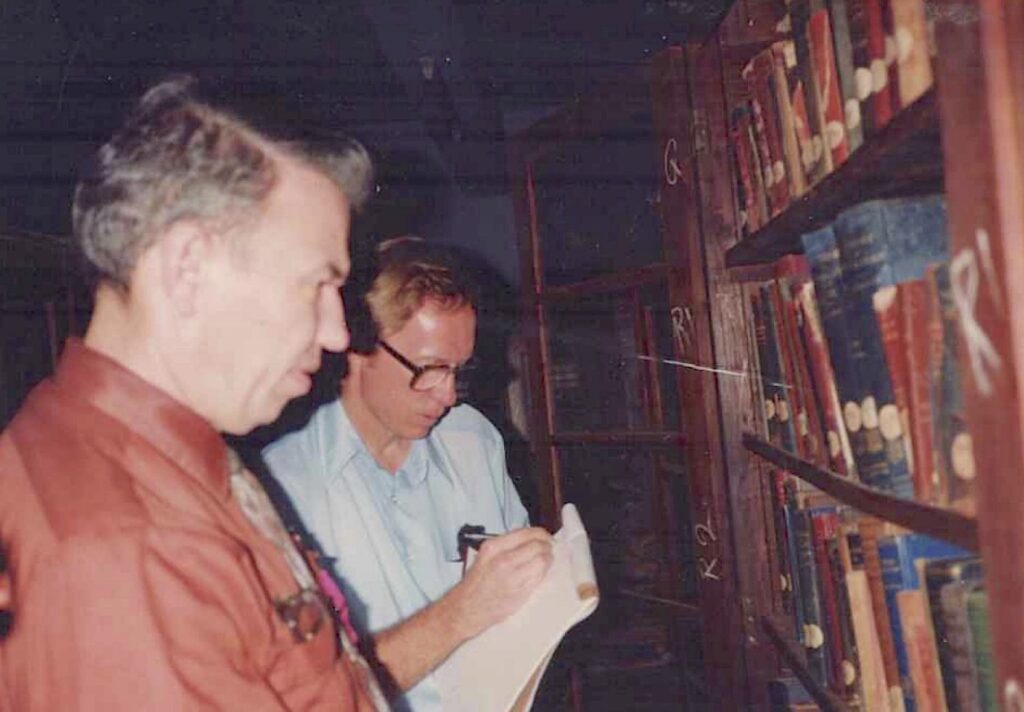
We sort of proceeded in the same way: if a topic was completed, then, we wrote it up, and revised or updated it as necessary. We didn’t proceed chronologically, we just did so by topic. It was good working with George. We collaborated very nicely. We agreed on everything, and we had no disagreements. It took us 20 years to complete the task.
That’s great.
How far do you think you have been able to accomplish the mission of a comprehensive and complete study of Ramanujan’s work?

I knew fairly early that I could use modular forms to prove these modular equations, but I didn’t want to do that because Ramanujan didn’t proceed in this way at all. So here, actually, I used Watson’s work a lot. I don’t recall exactly where Watson ended and I began, but I think for degree seven already, it was beginning to get difficult. I have never been able to figure out how Ramanujan would have argued. There are ideas of Ramanujan which we are missing, and which I would love to have, to prove these modular equations.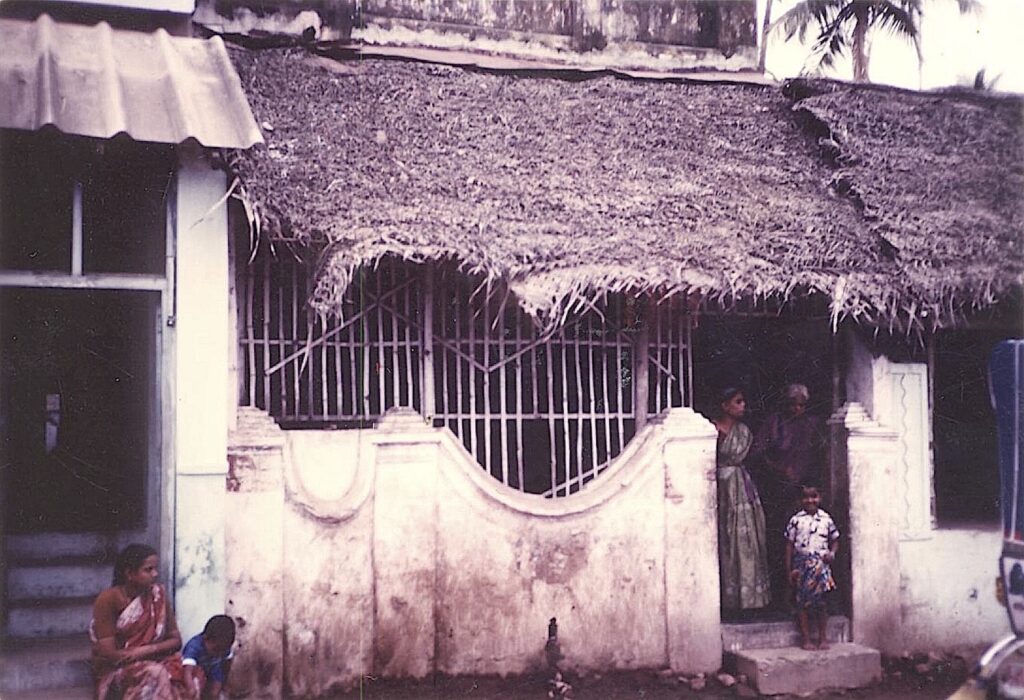
Just recently, in the last few months, I looked at degree eleven again. There is something he knew that I don’t know. He has differential equations, first order equations, involving the multiplier, and the formulas suggest that Ramanujan used them, but it doesn’t really fit in with the forms of the modular equations. I just can’t figure this out at all. It’s a huge mystery. So for all these higher degrees, I had to use modular forms. And for none of them do I have a clue as to how Ramanujan argued. It’s a huge mystery.
I remember when I had been to your home for the first time, I think sometime in the fall of 2006, I had asked you what you would do if you got a chance to meet Ramanujan and you had said you would ask him what ideas he used to prove his beautiful theorems.
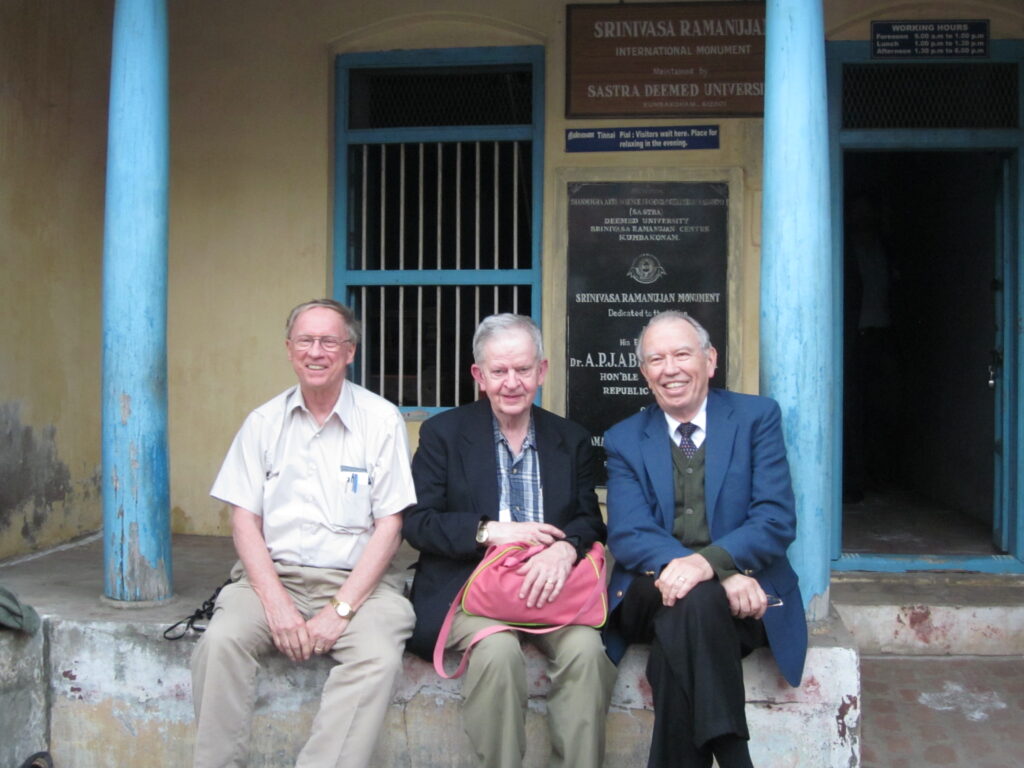 |
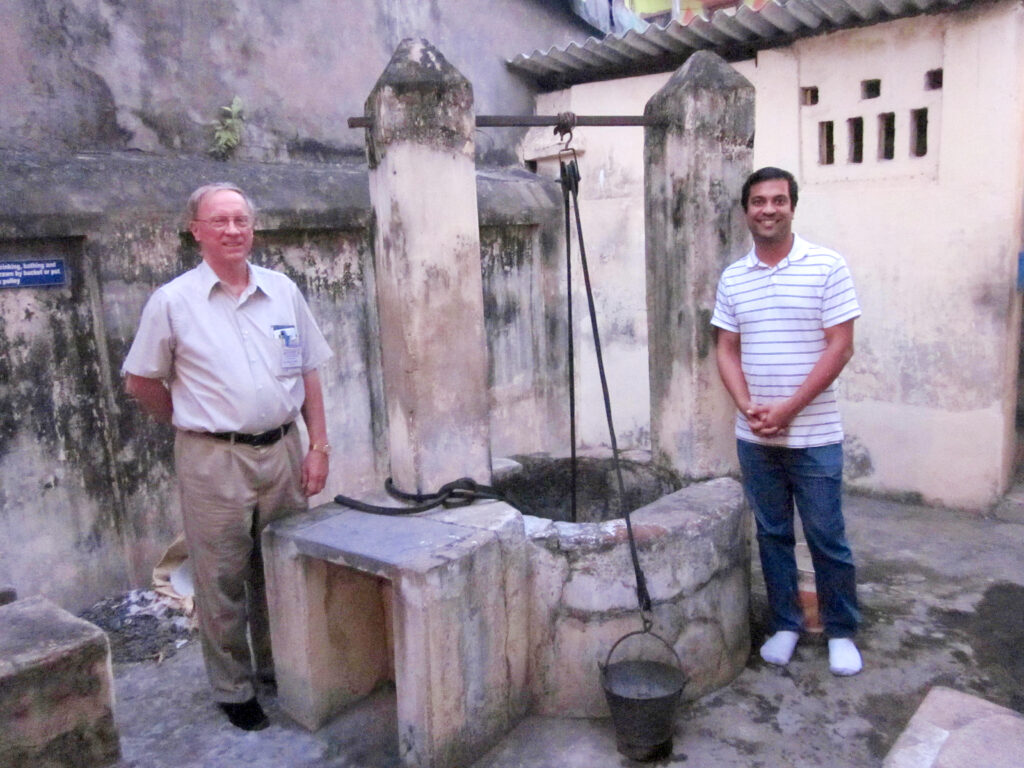 |
Before the next question: was your first trip to India, in the year 1987, for the centenary?
And were you able to meet Mrs. Ramanujan?
So we all know Hardy’s favourite formula from Ramanujan, or what he called as the most beautiful identity. If I were to ask you, what would be your favourite formula in Ramanujan’s work, if at all, you can narrow it down to a single one?
It’s hard to pick a single one.
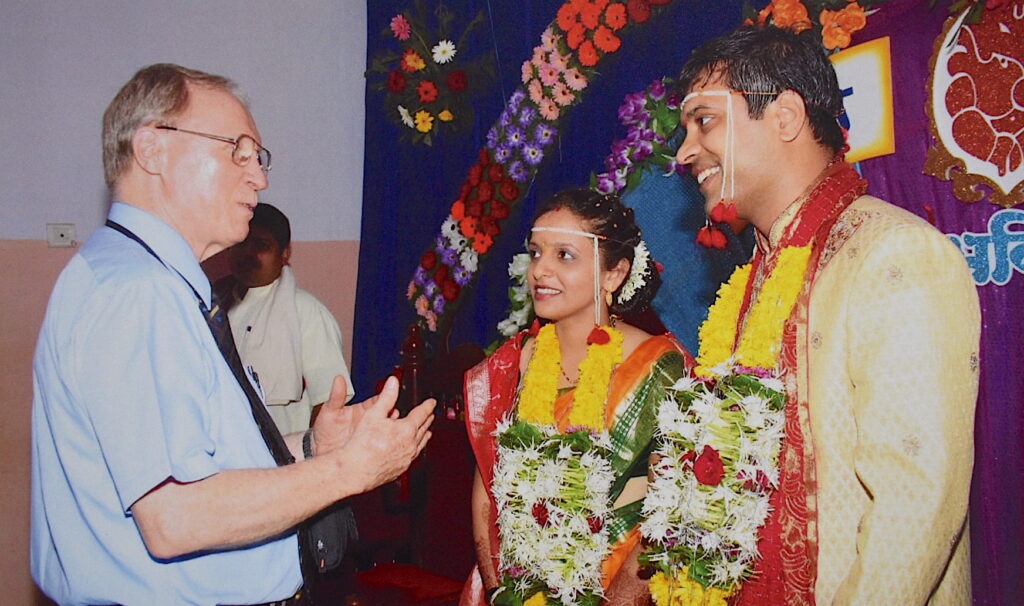
Right. Sitting at this point at the conference organized in honour of your 85th birthday, along with George Andrews’ 85th birthday, how do you retrospect on the course of your life that was decisively driven by the spirit of Ramanujan?
That’s your modesty.
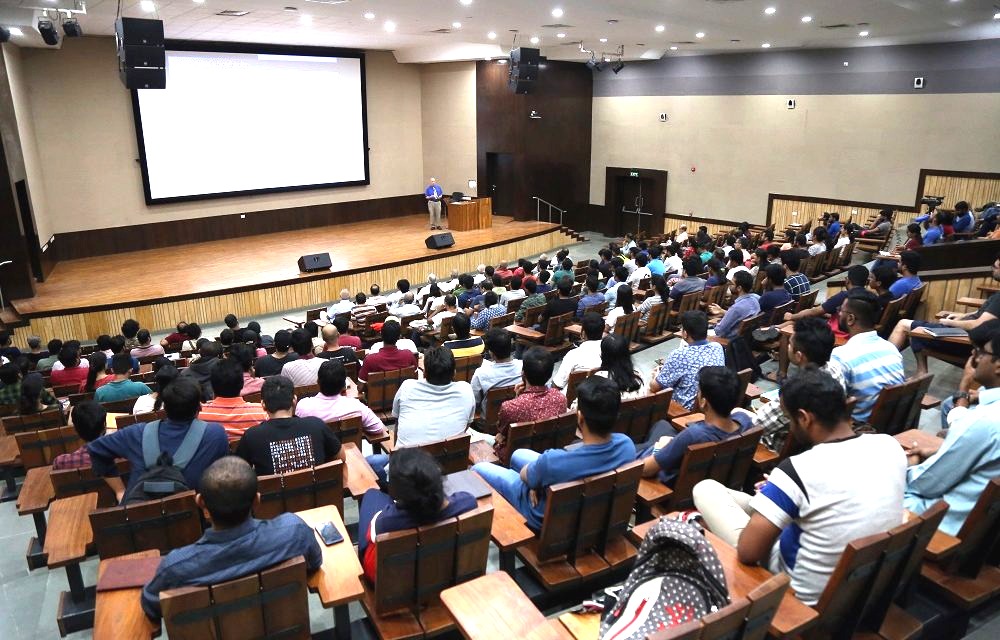
My thesis is in very classical analytic number theory, and this is the kind of stuff I really like. So, I was especially attracted to Ramanujan’s work. I was extremely lucky that my work took me to Ramanujan’s work. George Andrews is a giant in mathematics. It’s very humbling to celebrate a birthday with him.
Of course, it’s very well deserved, and we really have benefited so much.
I mean, just as you said Ramanujan changed the course of your life, you changed our lives when we started our graduate studies with you.
Each one of Ramanujan’s identities is beautiful
Yeah, it’s been really wonderful since the fall of 2006, when I asked you to supervise my thesis and you took me as your student. That was really the best thing that happened to me.
Some worked more or less on their own, while for others I needed to work more closely with them to finish their thesis. But in every case, I felt it was a good experience. In other words, I don’t regret the paths we took together.
My last question is, I guess a part of it is related to the previous one too. How would you express your sentiments as to what exactly about Ramanujan drew you dedicating your career towards showcasing his life and work?
His work is beautiful, and,like visual art or music, it is one of the pleasures and values of life. Ramanujan didn’t have any ugly mathematics. It was all beautiful. When he tried to find an approximation, the path to it was beautiful, whether it be through an asymptotic formula or some sort of clever device or something you could derive from an equality. Creativeness, cleverness, beauty. These are, I guess, the best words to describe Ramanujan.
Wow, that’s very well put. What a wonderful interview this has been. Thank you so much.\blacksquare
Footnotes
- The ship that carried a group of English families from England to Plymouth, Massachusetts, where they established the first permanent New England colony in 1620. ↩
- A long, slender wooden tube, widening out into a bell shape at the end. Attached to the wood are metal keys which are operated by the musician’s fingers to open and close holes along the length of the tube. A standard oboe is 2 feet long. ↩
